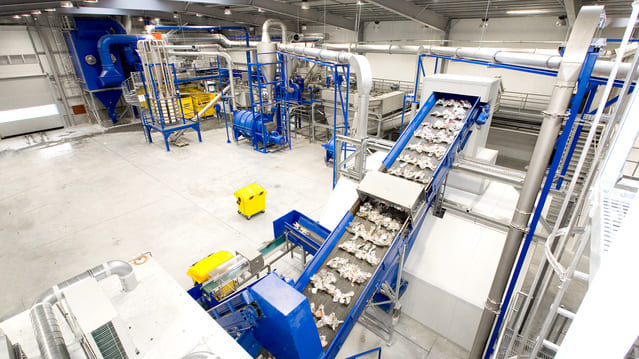
PET containers – disposable material that decomposes very slowly and, if not properly disposed of, has a harmful effect on the environment. Fine plastic particles, when released into water and air, have a detrimental effect on the ecosystem and can even enter food chains. Production requires a significant amount of oil as well as energy, which leads to the emission of greenhouse gases and exacerbates climate change. Recycling PET bottles allows the use of recycling in the form of recycled plastic, which saves resources and reduces the pressure on natural sources.
Contents
Methods of recycling pet products
Plastic recycling creates a closed resource cycle where used plastic is reused to make new products, reducing the need for extraction of raw materials. There are several ways to dispose of PET containers:
- ✅ Mechanical processing and granulation. Plastic containers are crushed and turned into shavings or granules. Recycled materials are used to make other pet products.
- ✅ Chemical recycling. Some technologies make it possible to decompose PET containers at the molecular level in order to obtain raw materials for the production of plastics or other chemical products.
- ✅ Pyrolysis. Plastic containers can be burned in special installations for the production of electricity or heat.
- ✅ Composting. Some special biodegradable PET containers can be industrially composted, where they decompose into natural components without harming the environment.
- ✅ Mechanical regeneration. This method is based on cleaning, erasing and regenerating PET containers to make them recyclable.
- ✅ Recyclable. PET containers can be recycled and used to create various products such as clothing, textiles, furniture, carpets and more.
PET bottle recycling: process features
Preparing bottles for disposal depends on the collection and recycling system. It is important to separate waste in advance: usually PET products are collected in special containers or waste bins for plastic. To prevent bad odors and reduce the risk of bacteria and mold development, it is recommended to rinse the bottles to remove any remaining contents. Remove lids and labels before handing over plastic containers – this simplifies the recycling process. Compressing bottles and packing them into bags or containers helps save space and increase transport efficiency.

Pet bottle disposal in production is more structured and organized. The process of collecting and classifying plastic products is automated using special devices. Bottles are first separated from other waste such as cardboard, glass or metal and then sorted by type and color to optimize recycling. Laundering and preliminary cleaning of product residues and other contaminants – important stage. The quality and safety of further processing depends on this. Further – the process of crushing and grinding products, crushers and granulators are used for this, depending on the type of production and equipment.
Crushed plastic is subjected to additional washing and disinfection to remove residual contaminants. After the preparation stage, recycled PET can be used to produce new products. Various technologies are used for this, including extrusion, injection molding and molding.
Plastic Bottle Recycling
Recycling and recycling help reduce the environmental impact of plastic and support sustainable manufacturing. Recycled materials are used for the production of containers, lids for eggplants, detergent bottles, cosmetics, personal care products, cans, etc. The resulting material is used to make plastic bags, garbage bags and other packaging of various types. Preforms for bottles – prefabricated molds or blanks for the production of plastic bottles by blowing. Made from recycled plastic, they optimize PET production, reduce the consumption of new raw materials and reduce the environmental footprint. Recycled PET can be used for automotive parts such as bumpers, upholstery, carpet and others
Other uses for recycling include:
- ✅ Construction. In particular, the production of various building materials such as insulation, boards, frame elements, corrugated sheets for roofing, etc.
- ✅ Furniture. Recycled plastic can be used to make furniture, including chairs, tables, plant stands and other home furnishings.
- ✅ Textile industry. PET is used for the production of polyester fabrics and polyester fibers, for tailoring, footwear and fleece.
Receiving containers for processing and further transportation
Recycling companies implement various PET recycling technologies. Before transportation, a mechanical press is used in order to reduce the volume of the primary batch and reduce the financial costs of transportation.
Only carefully sorted containers that have already been prepared in advance should be transferred for recycling. Acceptance of PET bottles has its own peculiarities: products must be without corks, caps and labels, have the same material and similar markings. Incoming PET raw materials after delivery to the enterprise undergo special control. The car, accompanied by the keeper, is weighed and checked for the necessary documentation. During the inspection, a plastic product is selectively determined, which is inspected. Ultimately, representatives of the quality control service determine the compliance of raw materials with all criteria and requirements.

